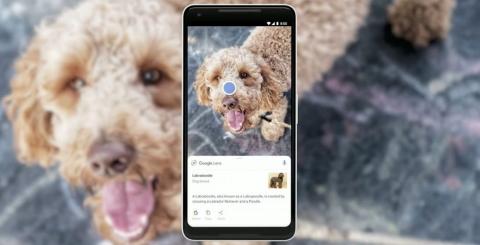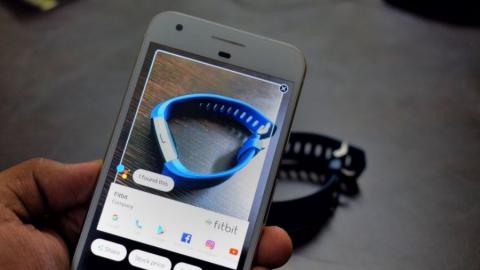+1(209) 348-9544
order@myessayservices.com
+1(209) 348-9544
order@myessayservices.com
![]() Are you in High School, College, Masters, Bachelors or Ph.D and need assistance with your research paper? All you need is to ask for essay help written by a specialist in your academic field. When you buy an essay from us, we offer you an original, nil plagiarized and unique paper written by a dedicated writer who is PhD or Masters qualified. MyEssayServices.com is an experienced service with over 9 years experience having delivered over 83,000 essays over the years.
Are you in High School, College, Masters, Bachelors or Ph.D and need assistance with your research paper? All you need is to ask for essay help written by a specialist in your academic field. When you buy an essay from us, we offer you an original, nil plagiarized and unique paper written by a dedicated writer who is PhD or Masters qualified. MyEssayServices.com is an experienced service with over 9 years experience having delivered over 83,000 essays over the years.

 For anyone suffering from diabetes, it is very important for the individual to keep their sugar levels in check. The check is an important routine since it provides information whether the individual has high or low sugar levels. The methods used for checking the sugar levels are at times tiresome, and they include pricking fingers and taking blood samples. The struggle that the diabetes patients go through prompted two individuals, Brian Otis and Babak Parviz. The two individuals came up with a solution which is in the form of smart contact lens. The smart contact lens measures levels of glucose in tears.
For anyone suffering from diabetes, it is very important for the individual to keep their sugar levels in check. The check is an important routine since it provides information whether the individual has high or low sugar levels. The methods used for checking the sugar levels are at times tiresome, and they include pricking fingers and taking blood samples. The struggle that the diabetes patients go through prompted two individuals, Brian Otis and Babak Parviz. The two individuals came up with a solution which is in the form of smart contact lens. The smart contact lens measures levels of glucose in tears.
Data provided by the World Health Organization shows that around three hundred and forty seven million in the world suffer from Diabetes. The two individuals looked at the plight of diabetes patients and the risks of damage to the kidney, heart and eyes: which may come as a result of the increase in blood sugar. The blood sugar can rise or fall due to some simple activities like sweating, eating or exercising (Kaufman, 78). Therefore, the blood sugar level needs to be on constant check to avoid an individual being rushed to the hospital. Brian and Babak have taken managing diabetes as their part time job. The two individuals who are the co-founders of the invention and Google X lab members created the invention 20 months ago.
The invention looks like a typical contact lens when held by the index finger. The lens contains in it two glitter-specks that twinkle. The glitter specks contain thousands of miniaturized transistors. The device also contains an antenna that has the thinness of a hair strand. The miniature transistors are used to measure glucose levels in diabetic tears. The glucose levels are then transmitted to the handheld device. The inventors claim that this was a very stressful innovation especially due to the size. To manage to put everything working considering the size was the biggest challenge.
The device is the smallest glucose sensor ever made in history, and it is a major milestone in the industry. The soldering of the wires to hair-size thinness then to a miniature electronic took quite some time. Brian Otis claims that, at some point, he could not even feel his fingertips. This is because the miniature, tiny chips had burned his fingertips; the sense of touch was lost for a while. The production of the device was made from scratch in Google’s Silicon Valley Headquarters. Major diabetic patients experience pain during the checking of the glucose level. This is because of pricking their fingers with a needle to get the level of sugar. This method is very inconvenient, and it hurts a lot.
The research on the contact lenses started a few years ago in the University of Washington. The device has an interference compensation which is a dual sensor: one sensor responds to glucose while the other both respond equally to the interference (Narayan, 89). The device also has a micro scale on the contact lens. The micro scale has been tested, and it has proved to be successful even in measuring glucose levels in low concentrations. This is bearing, in fact, the presence of interfering chemicals. The dual sensor contains two effective working electrodes (WE), one common reference electrode (RE), and two counter electrodes which are conjoint (CE).
 The reaction takes place at the working electrodes, and the current electrode acts as the current drain. The reference electrode provides a stable reference potential, and the bare area between the working electrode and the counter electrodes create a platform for enzyme immobilization. The counter electrode is also designed that is larger than the working electrodes to ensure that the signal is determined by the conditions at the working electrode. The common reference electrode is designed such that it looks like a bar between the control sensor and the primary sensor. Electrical connections which run between the sensor for testing and the external potentiostat are made of four large pads.
The reaction takes place at the working electrodes, and the current electrode acts as the current drain. The reference electrode provides a stable reference potential, and the bare area between the working electrode and the counter electrodes create a platform for enzyme immobilization. The counter electrode is also designed that is larger than the working electrodes to ensure that the signal is determined by the conditions at the working electrode. The common reference electrode is designed such that it looks like a bar between the control sensor and the primary sensor. Electrical connections which run between the sensor for testing and the external potentiostat are made of four large pads.
The sensor fabrication process begins with a polyethylene terephthalate (PET) wafer which is transparent. The wafer is cut to a standard 4-inch wafer shape using a CO 2 laser more cut and then cleaned with acetone, isopropyl alcohol (IPA) with deionized (DI) water in the sequence. The wafer is then spin-coated with an estimated 6 μm layer of photoresist (AZ4620). After this, the wafer is soft baked for 20 min at 65 O C, and lastly the resulting photoresist is developed after being exposed. Three metal layers, Ti (10 nm)/Pd (20 nm)/Pt (100 nm) are then evaporated in a sequence without having to break the vacuum. The layer between the Pt and Ti is a layer of Pd, which is additive (Cunningham, 123). The Pd plays a very big role as a metal diffusion barrier layer which increases the stability of the signal. After being put in acetone for ten minutes and thereafter cleaning with DI water and IPA, the plastic wafer is dried with nitrogen gas. This is then cut into small pieces with a diameter of 1 cm. The small sensor, when molded with heat to the shape of a contact lens with electrodes, forms the outside surface.
In conclusion, the device is a great invention, and it is set to help very many diabetic patients. The prototype will, however, be ready for the market in about five year’s time. This is because the group behind this invention is not ready to start rolling out the device for the large market of diabetes patients. There are also some details in the device that need to be checked to avoid any failures in the future. All in all, this contact lens is a major milestone and is set to help the millions of diabetic patients in the world.
References
Cunningham, David D, and Julie A. Stenken. In Vivo Glucose Sensing. Hoboken: John Wiley & Sons, 2009. Internet resource.
Kaufman, Francine R, and Emily Westfall. Insulin Pumps and Continuous Glucose Monitoring: A User's Guide to Effective Diabetes Management. Alexandria, Va: American Diabetes Assocaiation, 2012. Print. Narayan, K M. V. Diabetes Public Health: From Data to Policy. Oxford: Oxford University Press, 2011. Internet resource.
Browse More Essay Topics 24/7/365 Support 11+ Yrs in Essay Writing Pay for Quality not Quantity Score that A+ Grade
Affordable Papers
Research Paper for Sale
Cheap Research Papers
Buy Term Papers
Buy Research Paper
Write My Paper
Buy an Essay
Cheap Essay Writer
Write my Essay
Thesis Help
Dissertation Help
Paper Writing Service
Pay for Homework
Pay for Research Paper
Do My Essay for Me
Pay for Essay
College Papers for Sale
Do My Homework for Me
College Essays for Sale
Buy Research Papers Online
Buy College paper
Client: "(Berlin, G.K., CA)"
Topic title:"Leadership shortfalls in Blue Chips"
Discipline: "Economics"
Pages: 5, (APA)
" Awesome, the writer delivered it as required by the professor. They also sent me a plagiarism & grammar report Wow!. I was worried about how the essay would turn up but this is exactly what wanted. Thank you and will be back with a longer essay"
Accounting Research Papers
Business Research Papers
Communication Research Papers
Computer Science Research Papers
Economic Research Papers
Film Studies Research Papers
Finance Research Papers
Geography Research Papers
History Essays
Psychology Research Papers
Political Science Research Papers
Nursing Research Papers
Mathematics Essays
Management Essays
Literature Essays
Law Essays
World Affairs Essays
Technology Essays
Sociology Essays
Science Essays
Religion Essays
+1(209) 348-9544
Terms
Privacy
Sitemap
Frequently Asked Questions
0% Plagiarism Guarantee
Money Back Guarantee
Revision Policy
